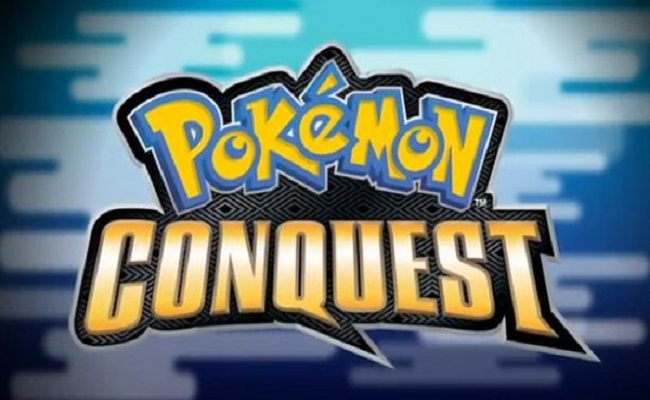Pokémon Conquest combines the Pokémon world with the Nobunaga’s Ambition series, turning the straightforward battles of Pokémon into a turn-based strategy game where power rarely matters. You play as either a boy or girl who starts off with an Eevee, and throughout the game you conquer kingdoms under the control of Nobunaga, gaining allies and enemies along the way and strengthening your army. Compared to the main games, only a few Pokémon are available, but it’s enough to make the game a varied experience depending on which Pokémon you catch.
For a Pokémon game, it had more than a few flaws. The tutorials are fairly hidden—in example, you have to already know where to find wild Pokémon before you see the tutorial on catching them. The menu system can be quite clumsy at times, with several different menus only available when you interact with a town, and others only in the start menu. The game requires lots of grinding for new Pokémon and trainers, and even when there are multiple routes for you to pursue, you’re often stuck fighting them from weakest to strongest because of your difference of strength.
The game includes plenty of unique elements, but some are not executed to their fullest. Certain Pokémon are immune to walking on certain types of terrain—lava, water, and ice are all examples. However, outside of the original map that these terrains appeared, there are very few places you can take advantage of this with your Pokémon. The most common one I saw in my play through was poisonous floors (I saw it a total of twice). At Nixtorm, the game took its time ‘thinking’ on how the enemies should move, making the battle longer than usual.
Strategy-wise, there are a few things that could vastly improve gameplay. A Pokémon’s speed barely affected gameplay. Since I am used to playing Final Fantasy Tactics, it bothered me that you had to choose your movement and your attack in that order; It often results in button mashing just to move forward to the attack from the same location you were last time. If you already told your character to wait, you can’t move it again, even though technically you didn’t do anything with it. It also seemed strange that you could not change the way your Pokémon were facing, even though angle and elevation affect whether an attack can land. The last thing that bothered me was that you had to reclaim a conquered castle, even if it would be more strategic to attack the enemy’s castle while it was nearly abandoned.
Still, the game has plenty to offer. Bird-types get a nice boost in usefulness, since they can travel over any terrain and elevation without their range getting affected. The maps are all very complicated, most with their own mechanics, and it keeps you guessing and learning throughout the game. Secret passages did get old, fast, but brought an added level of challenge to the game. Different win conditions also made the game less monotonous, and the link feature for catching Pokémon was simple enough and made expanding your team very easy.
Overall, the music was good and never got repetitive, even though the same tracks were used quite often in minor battles. The graphics were also good, but could be better—oftentimes, the individual frames of the sprites looked very silly. The plot is one of the most interesting of all the Pokémon games, and even had me interested in the history behind it as I played. As with the regular series, raising a correctly-typed Pokémon makes certain battles a breeze, and even the end battle is no exception. Once you beat the game, you unlock ten different story modes where you control other characters, making the game very long and certainly giving it replay value. The game is fun and quite addicting, but it’s not exactly a Pokémon game. You should only buy it if you are interested in turn-based strategy or are already a fan.
Overall Score: 8.6



0 Comments